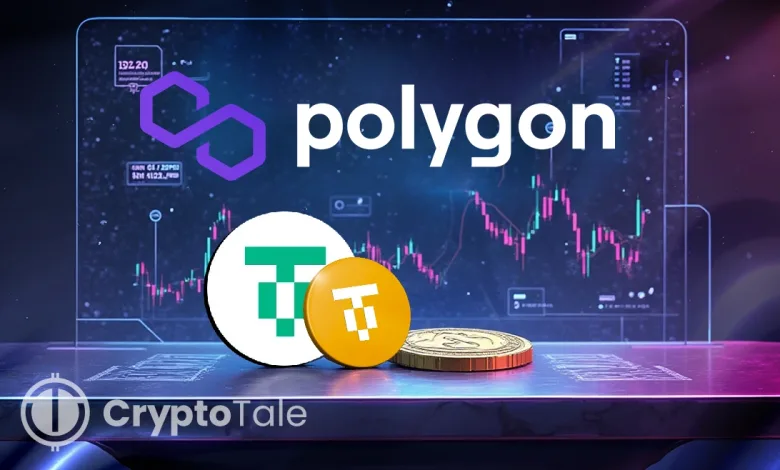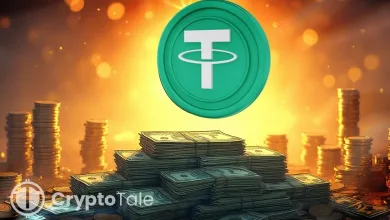Polygon Adopts USDT0, XAUt0 to Strengthen Institutional Role

- Polygon adds USDT0 and XAUt0, creating stronger cross-chain rails for stablecoin value.
- With $1B liquidity and 6M wallets, Polygon strengthens its base for omnichain adoption.
- Integration positions Polygon as a leading hub for institutional DeFi and interoperability.
Polygon is preparing for a major leap in its evolution as a scaling solution for Ethereum. The network would integrate USDT0 and XAUt0, the omnichain stablecoins enabled by LayerZero’s OFT standard. The move was confirmed by Everdawn Labs, operator of USDT0, which described Polygon as a natural home for this new liquidity layer. This integration enables trusted value to move across chains more easily, while boosting Polygon’s appeal to institutional finance.
USDT0 and XAUt0 are not like the traditional Tether stablecoins USDT and XAUT. While USDT is secured by dollar reserves and XAUT by gold, their omnichain equivalents are minted by securing assets via Ethereum contracts.
The system enables the stablecoins to be hosted on many blockchains, but they are pegged to underlying reserves. The integration of this model by Polygon is a fine indicator of alignment with the future of transfer values across chains.
Polygon Emerges as Interoperability Hub
The decision to bring these tokens onto Polygon underscores the network’s scale and reach. Polygon already holds more than $1 billion in USDT liquidity and has over six million active wallets. Such depth gives USDT0 and XAUt0 a foundation for immediate circulation. Lorenzo R, co-founder of USDT0, said the move transforms Polygon into an interoperability hub that connects stablecoins to broader liquidity pools.
The upgrade also indicates the institutional aspirations of Polygon, like the AggLayer and Bhilai Hardfork. These upgrades increase transaction capacity and settlement efficiency as enterprise adoption takes the spotlight.
The upgrades also help make the network a prime centre for massive financial activities and have appealed to institutional investors, seeking stablecoin ecosystems and trustworthy cross-chain rails, by hosting omnichain assets.
Within two months of its launch, USDT0 has displayed significant development and has hit almost $1.6 billion in market capitalization. On the other hand, XAUt0 has experienced slower adoption, at a market cap of $2.5 million, although the introduction onto Polygon would introduce an element of gold-backed liquidity previously nonexistent. Collectively, the integration of these tokens will bring new levels of value to the Polygon ecosystem, blending scale with asset diversity.
Related: Coinbase Adds WLFI’s USD1 Stablecoin to Its Listing Roadmap
Boosting Trust with Omnichain Integration
Stablecoin adoption has always hinged on trust and accessibility, and by aligning with USDT0 and XAUt0, Polygon has simplified access to stable value, thus expanding options for users seeking reliable assets in volatile markets. For DeFi platforms and payment networks, this represents a chance to standardize transfers across multiple blockchains without the fragmentation of earlier systems.
Ethereum remains the base chain for this architecture, acting as the LockBox for USDT and XAUT deposits. Tokens minted on Ethereum back the circulation of USDT0 and XAUt0 on connected chains, securing the integrity of supply while allowing liquidity to flow wherever demand exists.
While Tether’s USDT has exceeded $167 billion in market capitalization, XAUT crossed the $1 billion mark recently. It is on this basis that the move by Polygon to embrace omnichain variants empowers its status in the race among blockchains to support the new generation of trusted digital assets.
Omnichain rails like USDT0 and XAUt0 suggest a future where blockchains operate less like isolated systems and more like connected infrastructure. For Polygon, the integration is more than technical progress, as it enhances the process of reinventing the movement of stable value over networks and the perception of utility of decentralized platforms by institutions. Moreover, Polygon’s contribution to the formation of blockchain interoperability could depend on its outcome.





